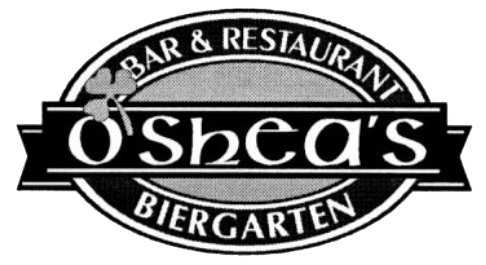Geschichte des Namens O’Shea
(Leider nur in Englisch im Moment)
Kurze Anmerkung hierzu:
Im Endeffekt ist O’Shea ein uralter Nachname, sehr beliebt in Irland mit wahnsinnig viel Geschichte!!
The name O’Shea is one of several transliterations of the Gaelic ‚O’Seaghdha,‘ meaning ‚descendant of Segda.‘ The Segda, or Seghdha, in question was a 7th-century Chieftain of the Corcu Duibne kin group (which also produced the septs of O’Connell and O’Falvey), a western Kerry tribal group which can be identified at least as early as the 6th or 7th century in western Kerry, and which may be synonymous with the ‚Iverni‘ described by Ptolemy in his outline of Ireland given in the mid-2nd century (note the similary between ‚Iverni‘ and Uibh Rathach, or ‚Iveragh,‘ of which the O’Sheas were Lords until the 12th century). The most extensive information on this Seghdha (although, one expects, mostly the product of 12th-century synthetic historians) may be found in the ‚Caithreim Ceallachain Chaisil,‘ a 12th-century propaganda text written for King Cormac III MacCarthy of Munster. the Ceallachain of the saga (the great-great-grandfather of Cormac III) is rescued from captivity aboard a Danish ship by the three Chieftains of the Corcu Duibne, namely Failbhe (a quo O’Falvey), Conghaile (a quo, O’Connell) and Seghdha (a quo O’Shea). Unfortunately, all three Corcu Duibne Chiefs are killed in the rescue mission. A slightly more reliable source, the ‚Lebor na Cert‘ or ‚Book of Rights‘ lists the Kings of Corcu Duibne as one of the significant tributary kings under the Kings of Cashel, so it seems that although the details in the ‚Caithreim‘ are embellishments, the relationship between the Corcu Duibne and the Eóghanacht Caisil (MacCarthys) was firmly established by the tenth century. The Seghdha of the ‚Caithreim Ceallachain Chaisil‘ must be regarded as a later descendant of the 7th-century eponymous ancestor described in medieval genealogies, or more likely a literary invention for political reasons – tying together the hero of the saga, Cellachain, with the ancestor of the Ui Séaghdha, in order to help cement political alliances between the Eóaghanacht Chaisil and the Corcu Duibne in the early 12th century. The latter explanation appears to be the best, as no primary sources or annals describe a 10th-century Seghdha.
Although one of the first Gaelic Irish families to have a coat of arms granted by an English King of Arms (granted to Odoneus O’Shee by Clarencieux in 1381), the Uí Séaghdha appear to have had as their clan totem the black swan (eala dubh), which was preserved as the heraldic crest in the overall achievement of arms (i.e., the portion of the arms appearing on top of the helm, above the shield – not on it). The totem is invoked in the battle cry of the Uí Séaghdha: Eala dubh Uíbh Rathach abú! (The Black Swan of Iveragh Forever!) This is sometimes shortened to simply, Eala dubh abú!
Following the expulsion of the Chief of the Name, Murchad Ua Seaghdha, from Munster by Cormac III MacCarthy in 1124, a branch of the family (seemingly the Chiefly branch) moved eastward into County Tipperary and later into Kilkenny, where they became very powerful land owners, and were in later years burgesses of Kilkenny. The most influential of these was Sir Richard Shee (died 1608) of Kilkenny, who built the Hospital of Jesus at Kilkenny, more commonly known as Shee’s Alms House, in 1582. This building on Rose Inn Street, which now serves as the Visitor Information Centre for Kilkenny, is among the best preserved Tudor period buildings in Ireland. There are also many Shee tombs in the Church of Saint Mary in Kilkenny, including that of Sir Richard.
In the 19th century, the name O’Shea is associated with the downfall of Parnell, owing to his affair (and later marriage) to Kitty O’Shea (nee Catherine Brown), the wife of Capt. William Henry O’Shea of the 18th Hussars (of the O’Sheas of Limerick, a branch of the Kilkenny Shees). A branch of this family became established in Spain. O’Sheas were also successful in France at this time. Col. William O’Shee , Chief of the Name (1798-1882), of the Cloran Branch, was a successful military officer in the French service, and compiled an important account of the genealogy and history of the sept. Another branch of the Kilkenny Shees, the O’Sheas of Camas, had descendants who settled at Pontoise, and who were ennobled by the French kings. Sir Martin Archer Shee (1769-1850) was a painter of accomplishment and President of the Royal Academy . O’Sheas of note in the 20th century include Milo O’Shea, the actor, Nessa Ní Shéaghdha, the Irish language scholar, Páidí Ó Sé, the Kerry football (soccer) team trainer, and Phillip Patrick O’Shea, New Zealand Herald of Arms Extraordinary.
Meaning of the Name:
As explained above, the name means ‚descendant of Seghdha.‘ The personal name ‚Seghdha‘ seems to mean ‚dauntless‘ or ’steadfast,‘ and it has also been suggested that the name comes from the same Old Irish root as the word for ‚hawk,‘ yeilding the connotation ‚hawk-like.‘ The name O’Shea (and its variants) is still found in high concentrations in Kerry today, with considerable numbers in counties Cork, Tipperary and Waterford.
